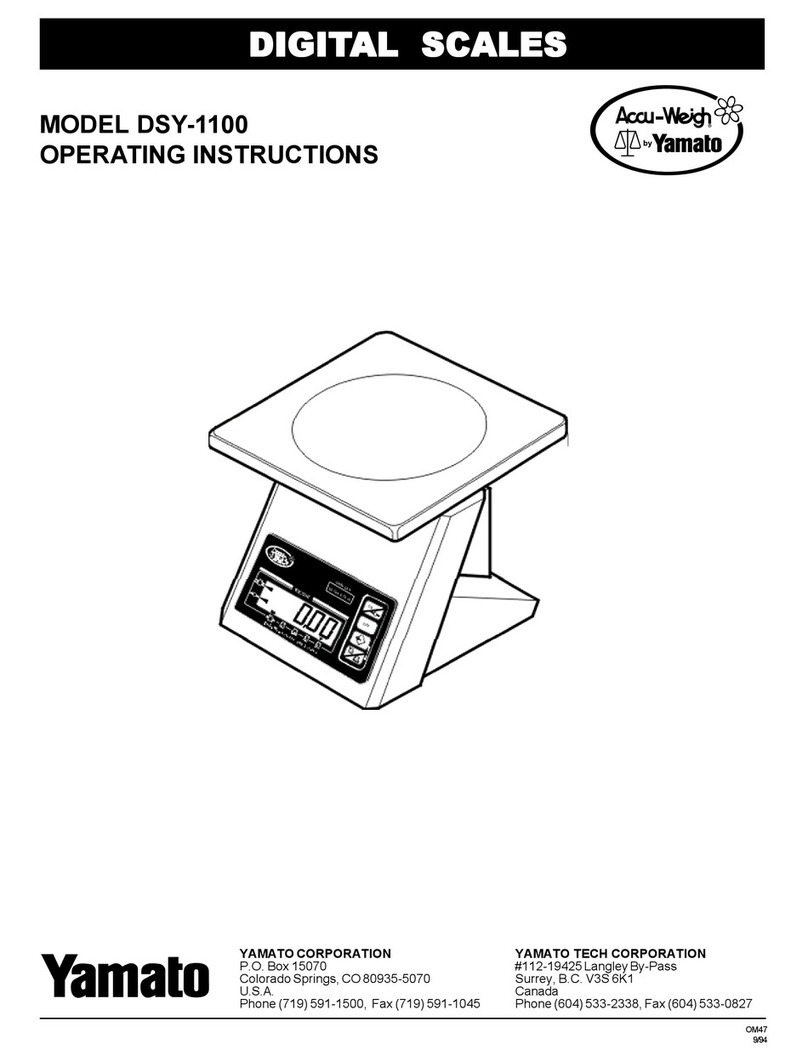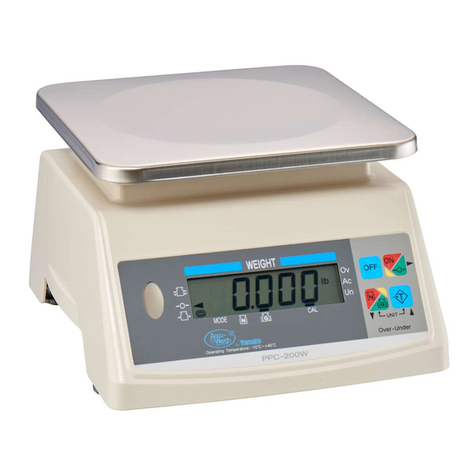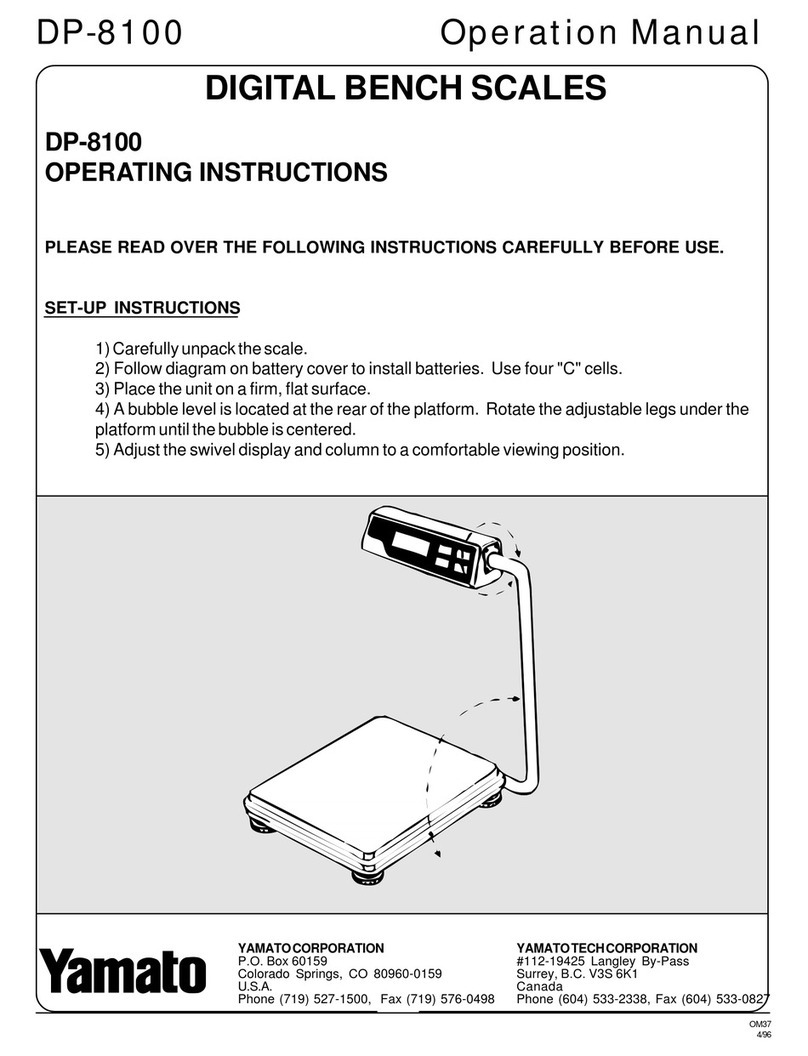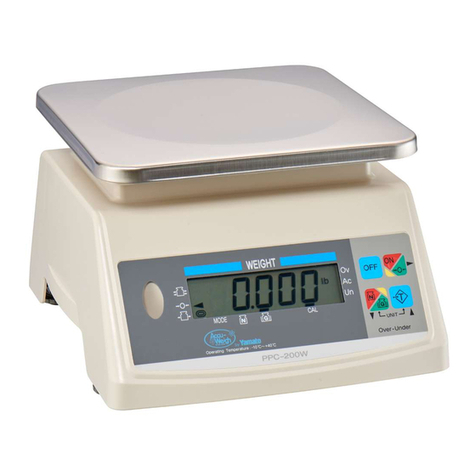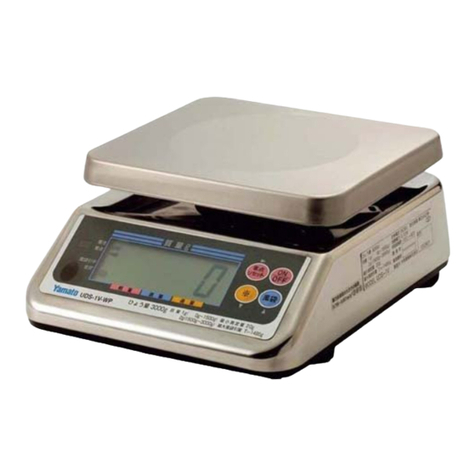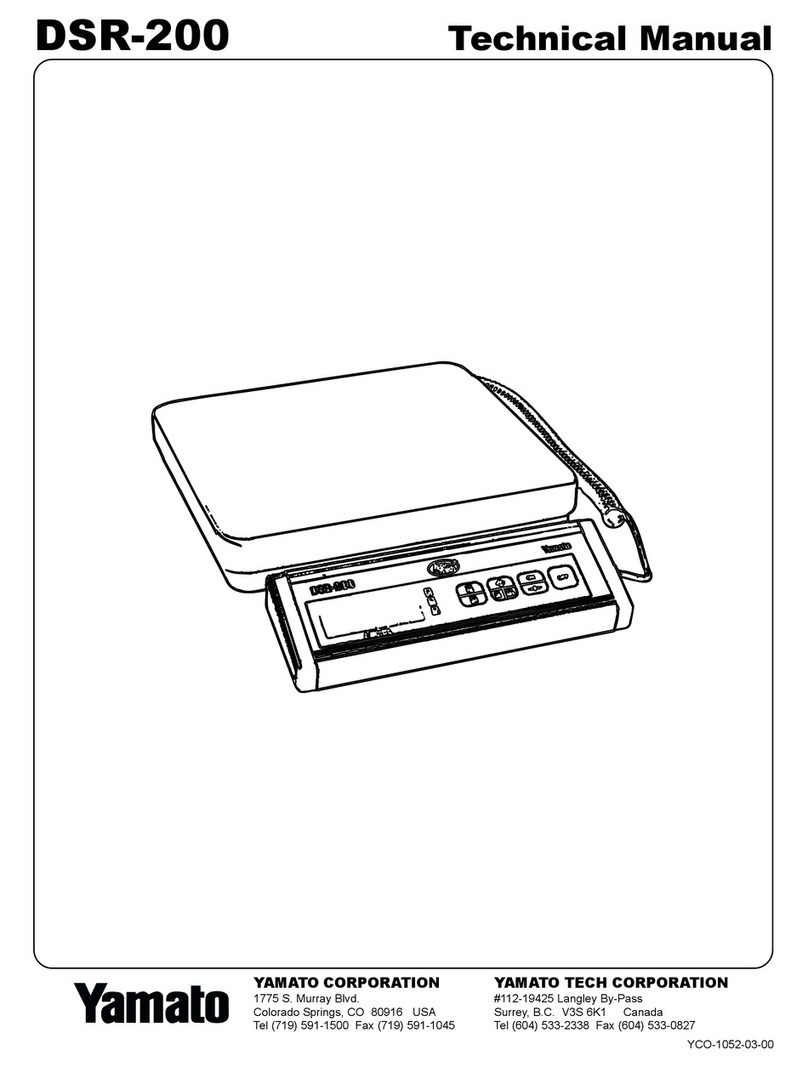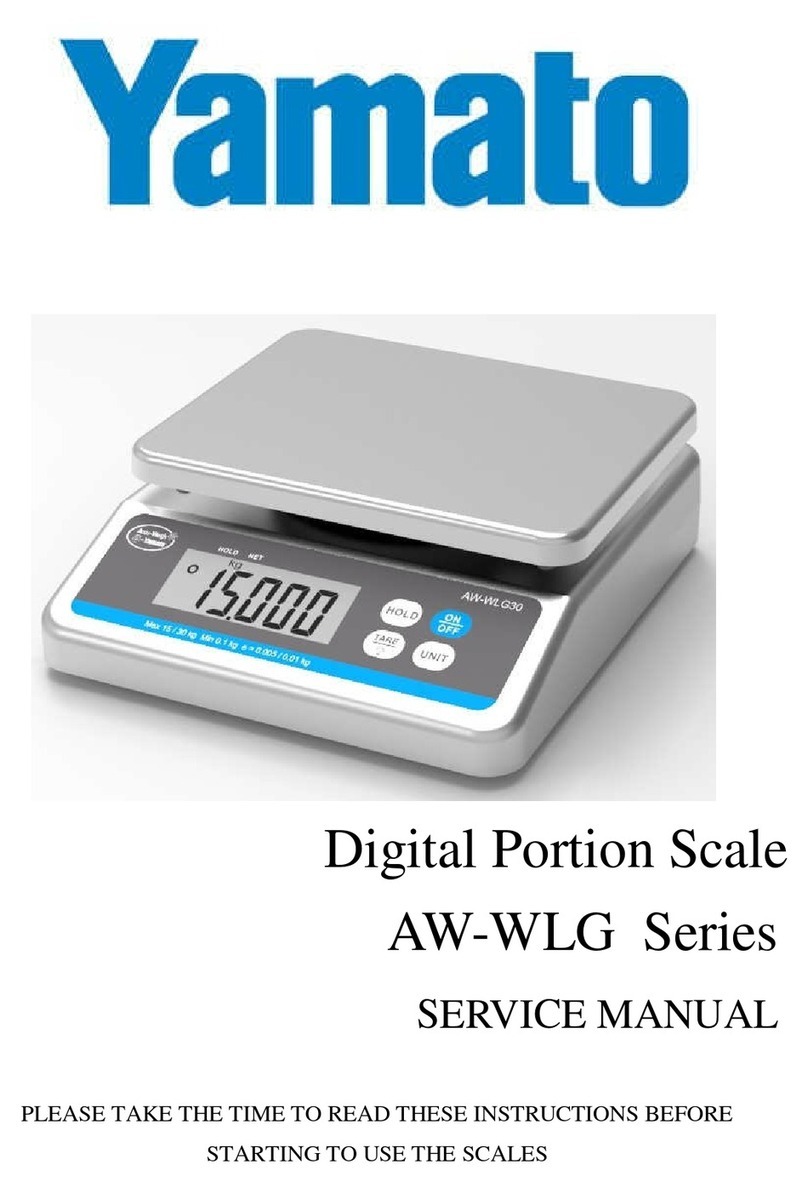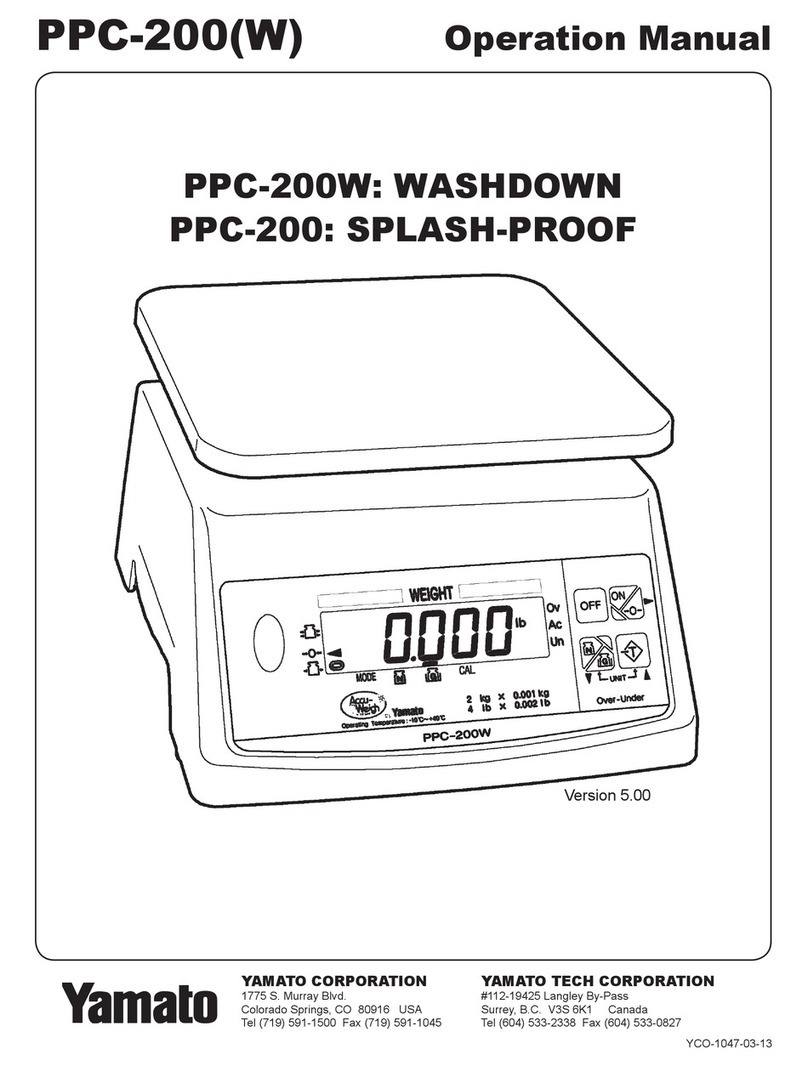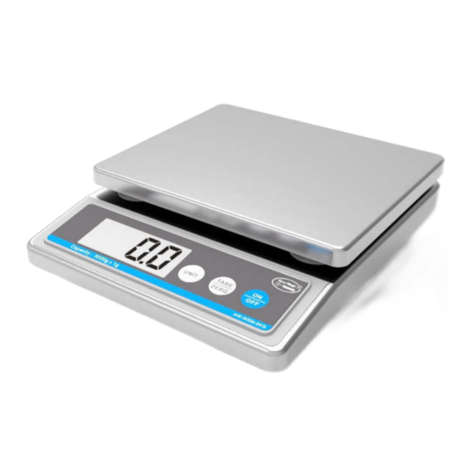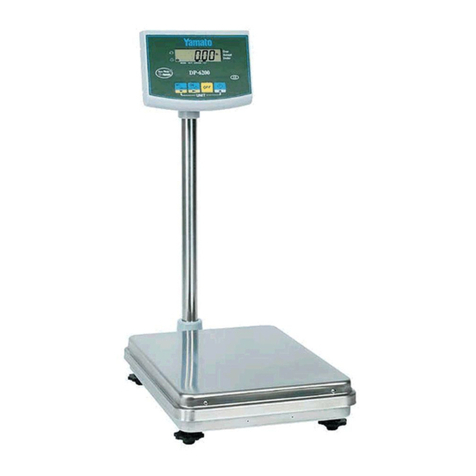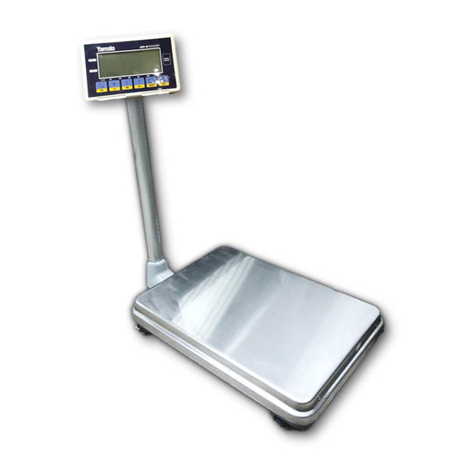
YCO-1094-04-02
CPC-2000 Technical Manual
Table of Contents
SAFETY INSTRUCTIONS
I. Introduction 1
II. Setup 1
Technician Setup Mode
Setting the Keywords
Calibrating the Scale
III. Troubleshooting 6
IV. Wiring Diagram 7
V. Parts List 8
Before using the scale, carefully read, understand, and follow the “Safety Instructions” described in this manual. Observe the advice given in
the Operation Manual to ensure proper operation. Keep this manual handy for reference.
1) This scale is not an explosion-proof model. Do not use the scale in an atmosphere containing flammable gases or explosive fumes. A fire or an explosion can result.
2) Do not operate the scale if there is smoke or a burnt smell coming from the scale. Remove the batteries or unplug the AC adaptor immediately. After making sure that there is no
danger, consult your dealer. Never try to repair the scale by yourself.
3) Never step on or sit on the scale. Not only will the scale be damaged, but you may also be injured.
4) Place the item to be weighed in the center of the platform. Items placed on the edge of the platform may fall off and cause injury.
5) When weighing a heavy, large or unbalanced item, make sure the item is stable on the platform, otherwise, an accident may occur.
6) When carrying or moving the scale, be sure to hold it by the bottom of the base with both hands. If you hold it by the platform, the platform may become detached causing the scale to
fall. This will damage the scale. The platform is designed for easy removal and clean-up.
7) Do not insert your finger into the gap or holes in the scale. You may be injured.
To prevent damage to the scale
1) Do not push the indicator or keys with sharp objects. They may break or puncture the switch membrane panel.
2) Use the specified power supply and choose a suitable environment. If you do not, the weight readings may be inaccurate and the scale may be damaged.
3) The scale is a sensitive weighing instrument, avoid physical shocks. If you drop something on the scale, step on the platform, or drop it, the scale may be damaged and lose accuracy.
4) If the scale becomes dirty, wipe it with a soft cloth. For stubborn stains, apply a little neutral detergent and then wipe the scale with a dry cloth. Do not use thinner, benzene, hot water,
or chemical agents on non-metallic parts, all of which can cause deformation, discoloration, or deterioration.
5) Never remove the case. The fine adjustment section may be damaged and you may be injured by sharp edges on the internal parts.
6) Do not place the scale upside down.
7) When the low battery indicator appears, recharge the battery. The battery should only be replaced by a qualified scale technician. If the scale will not be used for a long period, have
the battery removed.
To keep the scale working efficiently
1) Place the scale on a flat stable surface that will support the scale and the load.
2) Do not place the scale in an area exposed to direct sunlight or to wind currents from an air conditioner, otherwise, the weights will not be accurate.
3) Do not place the scale near machines that create vibrations or electromagnetic disturbance, such as microwave ovens, portable phones, or large motors. This will affect the accuracy.
4) The operating temperature range is from –10°C to +40°C (14°F to 104°F). Do not subject the scale to sudden temperature changes; allow the scale to adjust to the new temperature
before use.
5) This scale is not waterproof or dustproof. Do not expose the scale to splashing water. Do not install the scale in an extremely humid or dusty environment.
6) If the scale is sealed, do not break the seal. If you break the seal, the scale will not be considered legal for trade. In this case, contact your dealer.
7) Do not disassemble or modify the scale, you will void the warranty. Modified scales will not be legal for trade.

